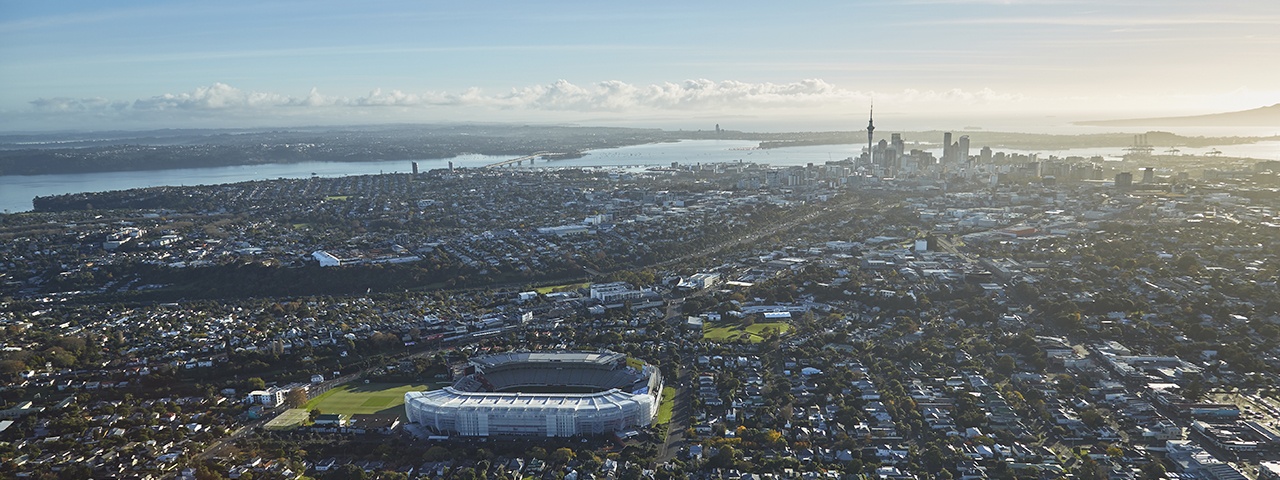With demand for affordable homes outstripping supply, Auckland’s housing crisis opens the door to construction companies and businesses with innovative building methods, technologies and materials.
Decades-long underinvestment, along with record population growth outpacing supply, is a key driver of New Zealand’s current housing and infrastructure crisis, with populous Auckland representing the sharp end of the shortfall.
As house (and urban land) prices soar, affordability is an added issue, particularly for first home buyers and low-income renters. The COVID-19 pandemic has also put a short-term squeeze on the economy, supplies and workforce.
Long term, the city requires an injection of green building technologies as New Zealand construction aims for a ‘decarbonised’ future.
Thinking forward
One way out of the crisis and into a good supply of suitable homes lies in denser housing models, along with innovative construction systems. Modular high-density housing, for instance, which has been successful in Asia and Europe, could alleviate pressure in Auckland’s future urban zones, particularly to the south and west.
Auckland has already responded to pressure by making changes to its Unitary Plan, enabling more intensification through the construction of terraced homes and high-rise apartments, and Aucklanders have signalled they are ready for this change in lifestyle.
Alongside more housing, Auckland also needs infrastructure, in the form of roading, public transportation, water management and large-scale commercial and retail initiatives. The Government is boosting infrastructure investments as one of the routes to economic recovery from the COVID-19 induced crisis.
Calling innovators and investors
New Zealand has a limited number of house builders who can deliver at scale and pace, and funding for vital infrastructure is draining council funds. This provides opportunities for overseas construction and building supply companies to enter the Auckland market and be part of the solution.
The invitation is also open to a wide range of infrastructure investors – from debt providers and professional services to technology suppliers and off-site manufacturers. See our related story, Building and infrastructure investments for fiscal stimulus.
This can be a win–win model - it presents investment opportunities for overseas stakeholders, while enabling Auckland to meet short- and long-term growth targets and provide local jobs. The city is an attractive destination for overseas companies looking to set up here; it ranks first in the world for ease of doing business (World Bank, 2020), and is the world’s most liveable city according to the Economist Intelligence Unit (2021).
Growing demand for green building materials also invites international participation. The New Zealand Green Building Council, a lobby group for the construction and property industry, is aiming for zero-carbon buildings by 2030. Back in 2010 it launched Homestar, a holistic tool for rating a home’s performance and environmental impact.
In July this year, the government launched its Building for Climate Change programme, which heralds a big step forward in greening the industry and addressing the challenges of climate change. Leonie Freeman, CEO of Property Council New Zealand says, ‘There has been a lot happening in the residential sector, with green star rating, greater awareness of smaller houses with smaller footprints, solar power and double glazing.’
Government initiatives
To trim red tape and speed-up the consenting process, the government is adapting the Resource Management Act. It is also updating the New Zealand Building Code, which will help smooth the transition to new green technologies. The government has also introduced trade apprenticeship subsidies to help grow much-needed skills in the local labour force and low interest rates are helping first-time buyers enter the housing market.
The government’s Special Purpose Vehicle (SPV) for housing development and infrastructure is a funding approach that allows private investment in new infrastructure (the debt sits on an independent balance sheet and is repaid by users, typically through levies that a council collects via rates). At Milldale north of Auckland, for example, the council and government have a partnership that will fund $91 million of roading and wastewater infrastructure to support the building of 9000 new homes, an innovative new approach developed through the government’s Urban Growth Agenda.
In the public housing sector, rapidly growing investment by Kāinga Ora – Homes and Communities enables contracts with large-scale private developers and institutions. Our recent interview with Kāinga Ora’s Director of Strategic Urban Partnerships describes its collaborative approach to housing and urban development.
Be part of the solution
Invest Auckland can provide more information to construction companies, building supply businesses and investors interested in entering the Auckland housing market.
Contact Investment Specialist Andrew Carpenter to learn more.
This article provides general information on potential investment opportunities in Auckland and is not intended to be used as a substitute for financial advice. The views and opinions expressed are those of the relevant author, and do not necessarily reflect the views of Tātaki Auckland Unlimited. Tātaki Auckland Unlimited and the author disclaims all liability in connection with any action that may be taken in reliance on this article, and for any error, deficiency, flaw or omission contained in it.
